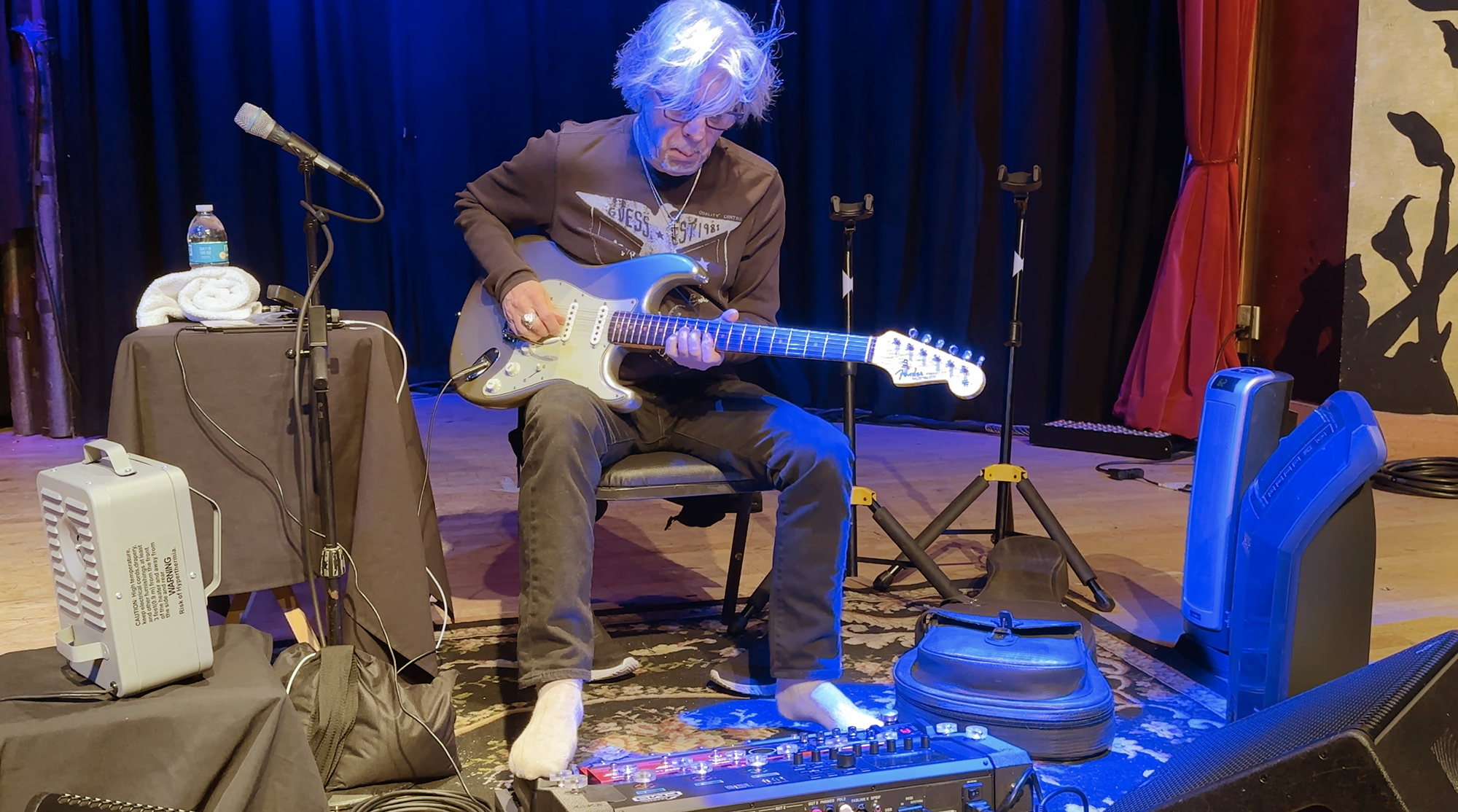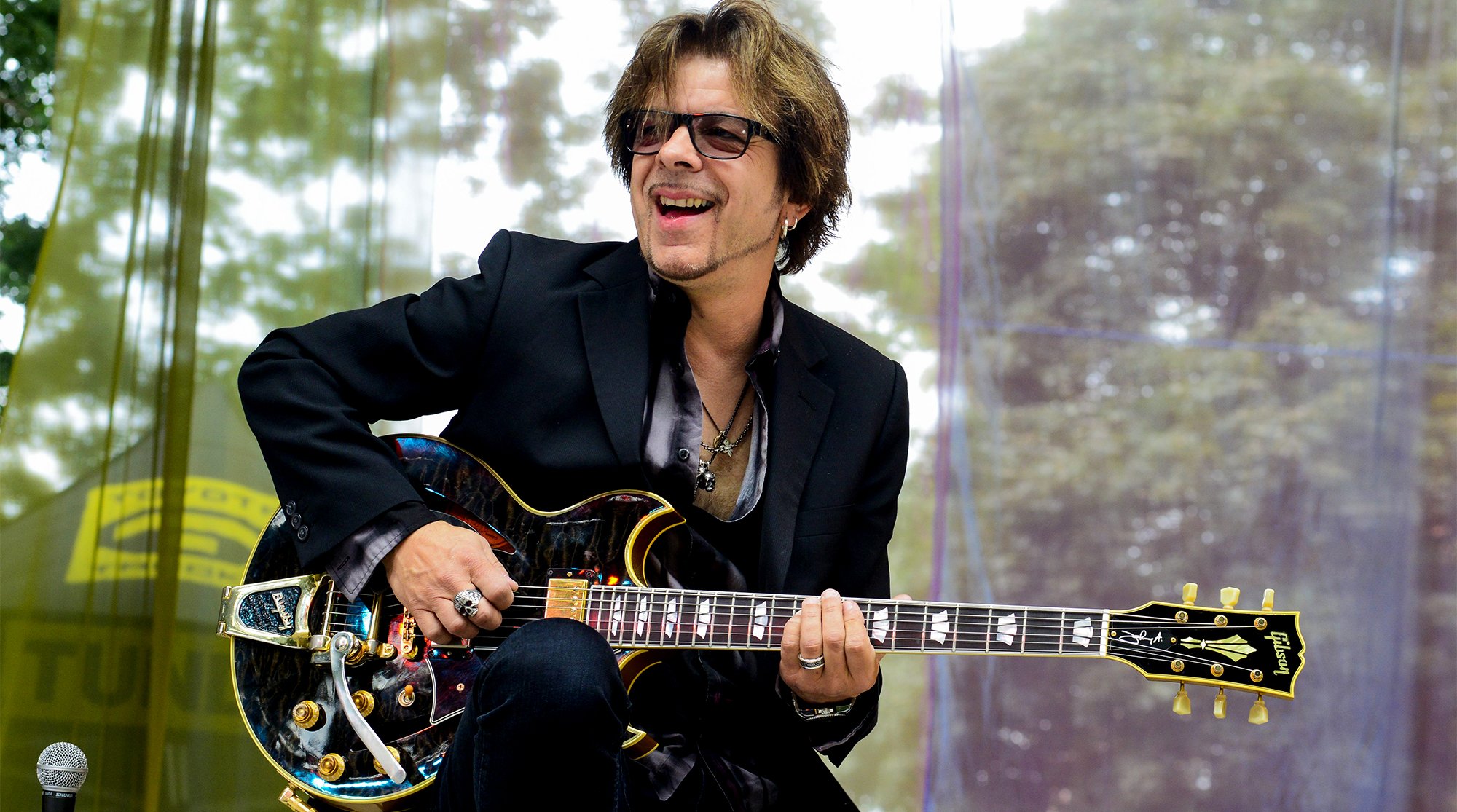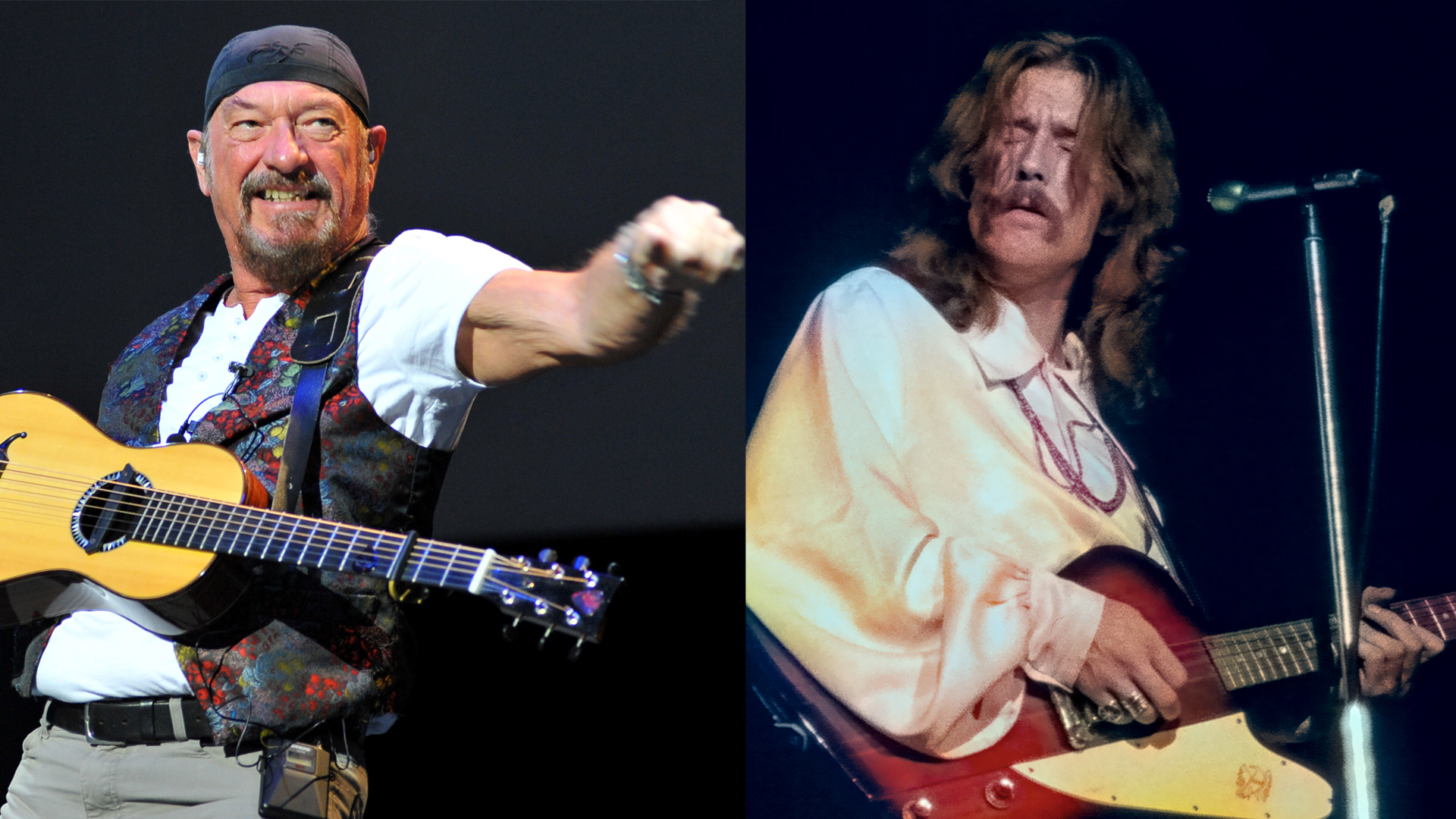“The looping show is high anxiety for me. The only time I get to relax is when I’m soloing.” Johnny A. walks us through his song-based live looping strategy as he demonstrates his guitar rig
The guitarist gave us a bird's-eye view of his pedalboard as he played through Jeff Beck’s “Morning Dew

When Guitar Player presented Johnny A.’s solo looping show at Yoshi’s for our first event of 2025 he graciously granted permission to shoot iPhone video at sound check. An Instagram clip quickly accumulated over 50,000 views with lots of comments asking for insights.
Well, you all are in luck because that clip was just the tip of the iceberg. The truly cool and utterly unique video came a moment later when he ran through the entire form of his take on Jeff Beck’s “Morning Dew” while I peeped over his shoulder delivering the artist’s point of view. You get unfettered access to Johnny in street clothes and no shoes tapping his way through the maze of settings on his Fractal processor and Boss looper.
GP had talked to Johnny about his looping show in 2021, but he’s clearly taken the next step to another level. We shared the POV video with him and followed up for a detailed explanation of his song-based solo looping act that thrilled the capacity crowd with everyone wondering, “How the hell does he do all that?”
I guess we’re lucky you were sitting down to facilitate that point of view with your fretboard and pedalboard visible, eh?
I can’t do it standing up because you really need to do things with both feet. Sometimes I have to use my left foot, sometimes it’s the right foot, and sometimes both simultaneously.
You previously used the TC Electronic Ditto X4, but you’ve switched to the Boss RC-600. What makes it the right choice right now?
Well, knock on wood, it's much more bulletproof. I started to have issues with the TC stuff. The RC-600 gives me up to six loops that can be coordinated either as separate tracks or stacked on top of each other, and it’s completely stereo. Although the Ditto that I used was stereo, it didn’t have an internal mixer like the Boss. It allows you to pan your loops when they play back in different places at different volumes. If you’re doing a lot of layering, the RC-600 provides great depth, complexity and clarity of sound over the stereo spectrum. You can set up a nice panoramic mix.
It also has built-in rhythm machine, which allows me to develop an arrangement further. I don’t use drum rhythms on every song, but it allows me to be more versatile with the sound and fill out the show in a more produced fashion. It gives the audience something more to hang onto.

It appears that you’ve also switched up your processor from a Fractal Audio Axe-Fx III rack unit with an FC-12 Foot Controller to a Fractal FM9. Does that essentially bring the processor and the foot controller into one unit?
Exactly. The reason for that was mainly economical, because it was costing a lot of money to fly two cases around. And it became more reliable to have everything kind of encased in one thing. I was also able to get a couple satellite switches from Otter Custom Design that allow me to have four more functions on the FM9. I don’t think I would have been able to do my looping gig without the Fractal.
Fractal technology with the ability to set up different signal paths has allowed me to produce my solo music live the way I like it. I use three parallel signal paths. Case in point, my bass line just hits a compressor and an octave divider that I run one hundred percent wet an octave below. There’s another parallel signal path that I use for synth-y things like shimmering reverbs.
None of the guitar signal processing like the amp tone, tremolo or Leslie effects touches the bass or the special effects. That keeps things articulate as I’m able to mix them at different volumes and pan them wherever I want. They all come together in a stereo output that goes to the house. That way I’m in control and not at the mercy of a different sound engineer each night.
You must put a ton of thought into which songs will work, and then doing all that pre-programming of what goes where.
Oh yeah. It’s not unlike being a producer with a vision for making a record. The first step is finding a song that works. Many looping artists set up a groove and then sing and jam to it, bringing parts in and out. That’s all well and good, but it’s usually based around a I chord, not a song structure going back and forth between a verse, chorus and bridge. I’ve always been a song guy.
I wanted to find a creative song-based approach without pre-recording anything, so the show is still very live and in the moment. The most obvious way is to play the song start to finish looping parts along the way, and then go back and start overdubbing. But that takes forever getting everything set up before you can play anything over the top. I try to find a creative way to arrange the song so that I can set it up quickly and get right to the meat.
It's a giant decision to use a rhythm track or not. What’s your thought process on that front?
I’m not really trying to make it sound like I’m playing with a drummer, varying the pattern from section to section even though I could. I don’t have anything against people playing with tracks, but that’s not for me. As a matter of fact, I had a very hard time deciding whether I even wanted to use any of these rhythm pulses at all. I didn’t want to come off like, “This guy’s cheating, or he’s mailing it in.”
When I use a rhythm track I try to keep a simple hypnotic thing happening, just to get a pulse for people to synch their body clocks into with what I’m doing, setting up layers underneath to play melodies and improvisation over the top. There are no fills or cymbal crashes, and the rhythm bed is subdominant in the mix.
Let’s walk through “Morning Dew” using the POV sound check video for cues. What’s that ambient sound that happens before the beat even starts?
That’s a low octave going through a shimmer effect. I bend the note up, stop with the tremolo arm depressed, and then release it slowly to get the note up to pitch. Once it’s up to the root note of the I chord, which is a B, I hit a freeze button, so I have that pedal tone with a breathy sound as an undercurrent happening through the whole song with a wide stereo spread.
Looking at the display on the Fractal, we can see that “Morning Dew” is patch 11, and that there are six pre-processed patches assigned to the buttons: Bass, Trem Rhythm, Pulse, Verse Rhythm, Melody and Overdrive.
Right, and I use Barefoot Buttons on the Fractal to elevate them and make them easier to reach with the FM9 placed above the RC-600. Once I have the shimmer sound going, I hit the Bass patch to get that tone ready for when I hit play on the RC-600. The beat kicks in and I immediately record the bass line into loop 1. Unlike the TC Electronic unit, the Boss does have quantizing, which is a good thing, but I still must be accurate with my timing to get the bass in the right spot.
Next we see a quick foot tap on Trem Rhythm as you flip into guitarist mode and play that little riff with the basic chord pattern.
That patch has a model of my favorite amp, the Marshall JTM45, with a bit of tremolo on it.
Then there’s another foot tap on the Pulse patch, and you play a rollicking part using your thumb to pluck and index finger to snap akin to Sting’s bass technique.
That’s recalling the original bass part played by Ron Wood on the Jeff Beck Group’s version of “Morning Dew.” I turned it into the guitar part. I switch to the middle pickup for a bit brighter sound to separate it from the rhythm guitar, and I use a clean tone playing percussively. It’s probably panned to mirror the rhythm guitar on the opposite side of the stereo spectrum, so they’re at like 10 o’clock and 2 o’clock.
Now that the first loop is fully fledged, you hit the Melody patch on the Fractal and play a gliss from the root to the five on the fifth string.
That’s the main theme of the song. I'm on the bridge pickup at that point. The tone is ruled off the guitar a bit, and the patch has overdrive to give it some dirt.
Then you hit the Verse Rhythm button on the Fractal and appear to stop loop one on the Boss. You play a new section of bass and guitar simultaneously. Is that loop two?
Right. I establish the verse on loop two. That patch has the bass and guitar parts going down separate parallel signal paths even though I’m playing them simultaneously. When I get to the end and finish that loop, I switch back to loop one, which brings me back to the theme for a pass. I play licks in-between the theme like you would responding to a singer. Then I switch back to loop two to play the melody over the verse progression. The soloing is over the verse as well.
So now you’re essentially able to switch back and forth and play over the top?
Right. There are only two loops in “Morning Dew.”
I see. And once you start cutting loose the expression pedal on the right becomes your wah?
Right. And I’ve got that set up for toe down bypass. It activates as soon as I step on it and rock it back. I set it up that way for a couple of reasons. First, if you set it for heel back bypass, sometimes vibrations from the subs at the club can inadvertently activate it. The second reason is that I don’t wear a guitar strap, and I need it as a footrest to elevate my leg into a 90-degree angle where my guitar can rest on it.
Finally, you improvise around the main theme with some whammy-infused licks before hitting a button and the whole songs fades.
I programmed an auto fade to end that song and a bunch of the other songs I wanted to fade out like on a record.
Do you feel an extra sense of accomplishment for pulling that off for a packed house at Yoshi’s all by your lonesome, or is it more like blessed relief after having done all that electronic toe tapping?
My mom owned a piano bar, and I always loved the fact that one guy could sit there and deliver a song. It was always a goal of mine to be able to do that. So in that sense, it feels like an accomplishment. And I don’t take it lightly to be able to fill a club like Yoshi’s. I think it’s great for any artist to do that.
The looping show is high anxiety for me. It’s like the playing is muscle memory and all the other stuff is the performance, as much as it should be the other way around. The only time I get to relax is when I’m soloing, the loop is doing its thing, and I’m free to improvise. All the other minutia involved with live looping can be mind-bending.
All the latest guitar news, interviews, lessons, reviews, deals and more, direct to your inbox!
Jimmy Leslie has been Frets editor since 2016. See many Guitar Player- and Frets-related videos on his YouTube channel, and learn about his acoustic/electric rock group at spirithustler.com.


